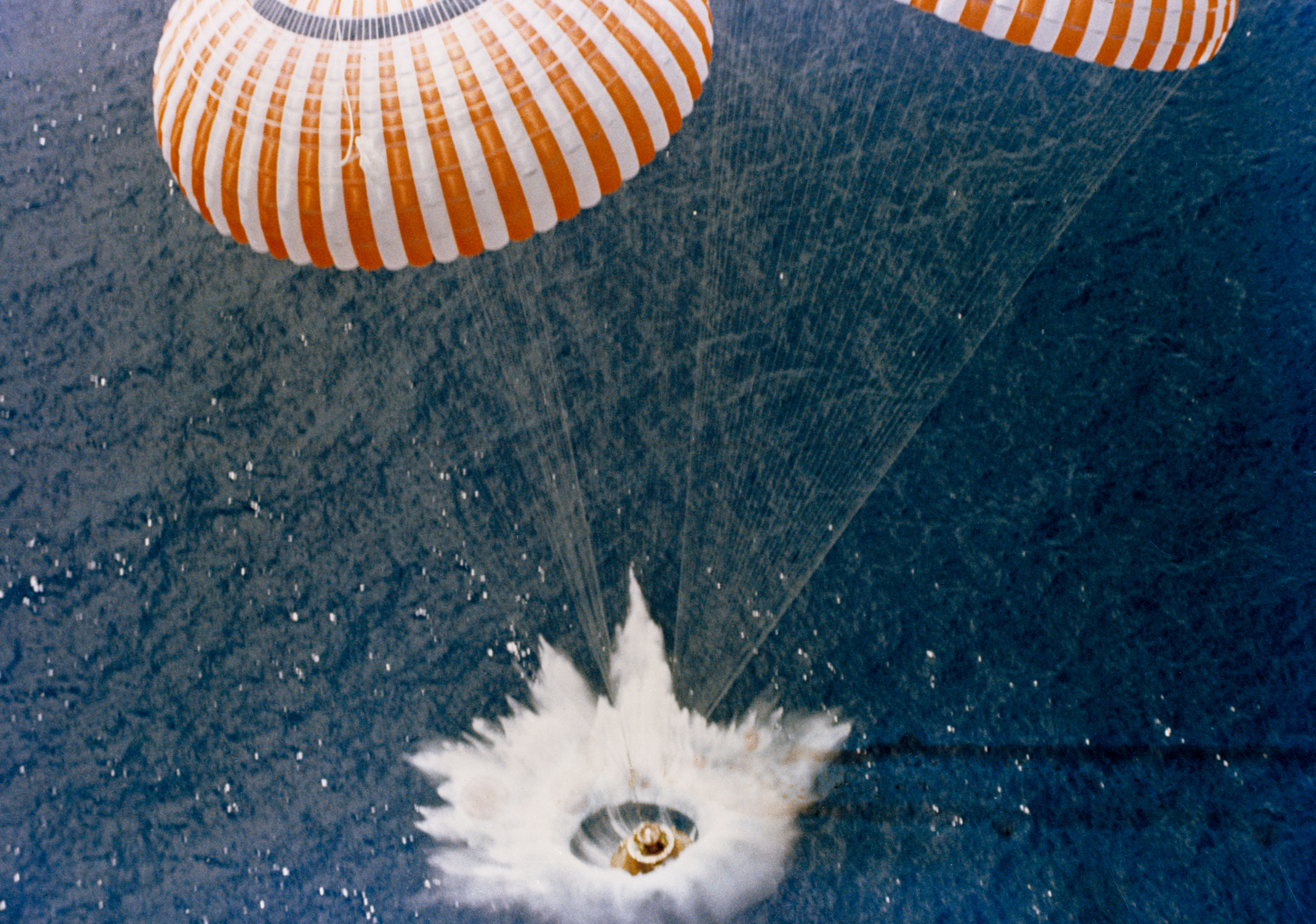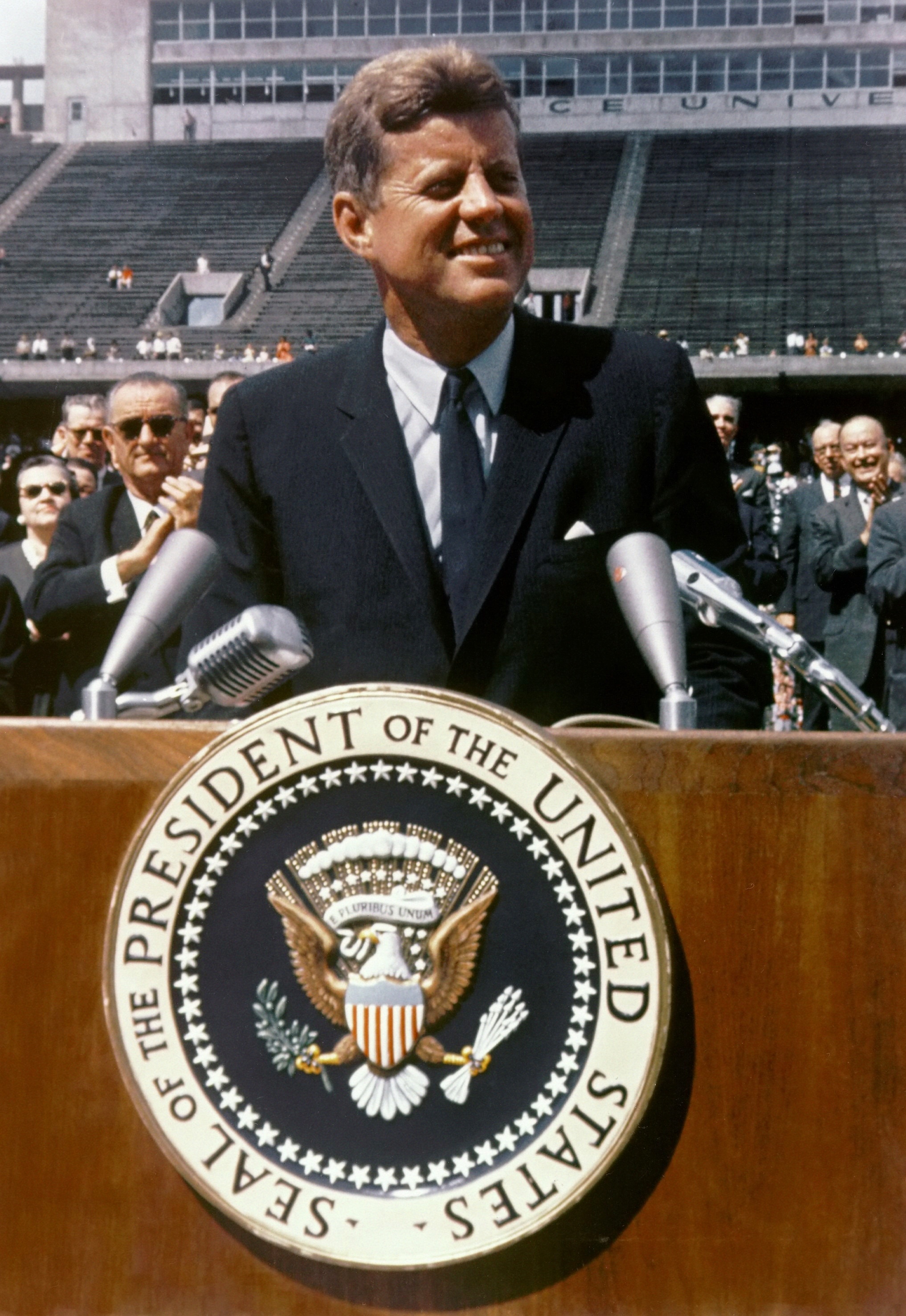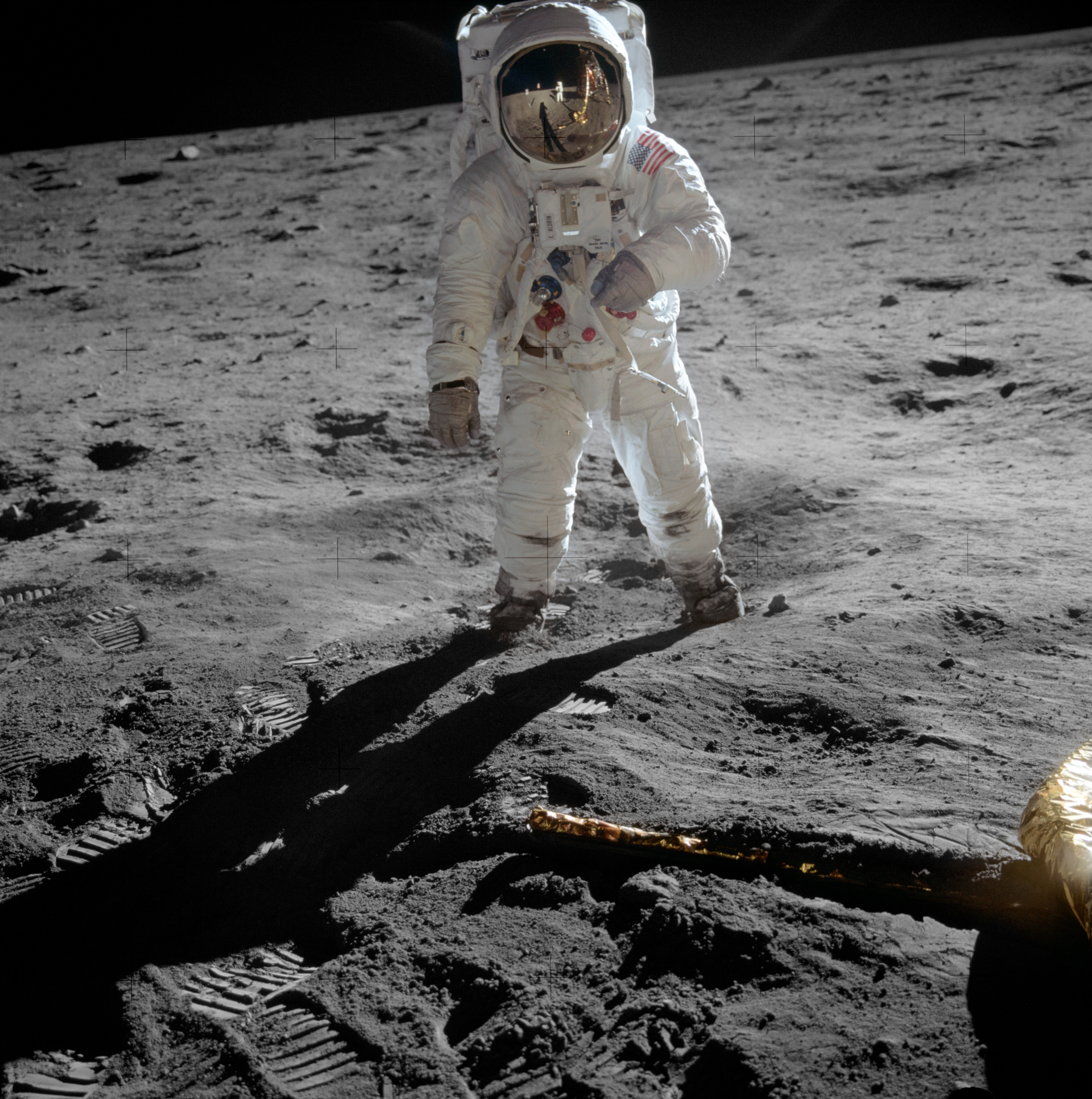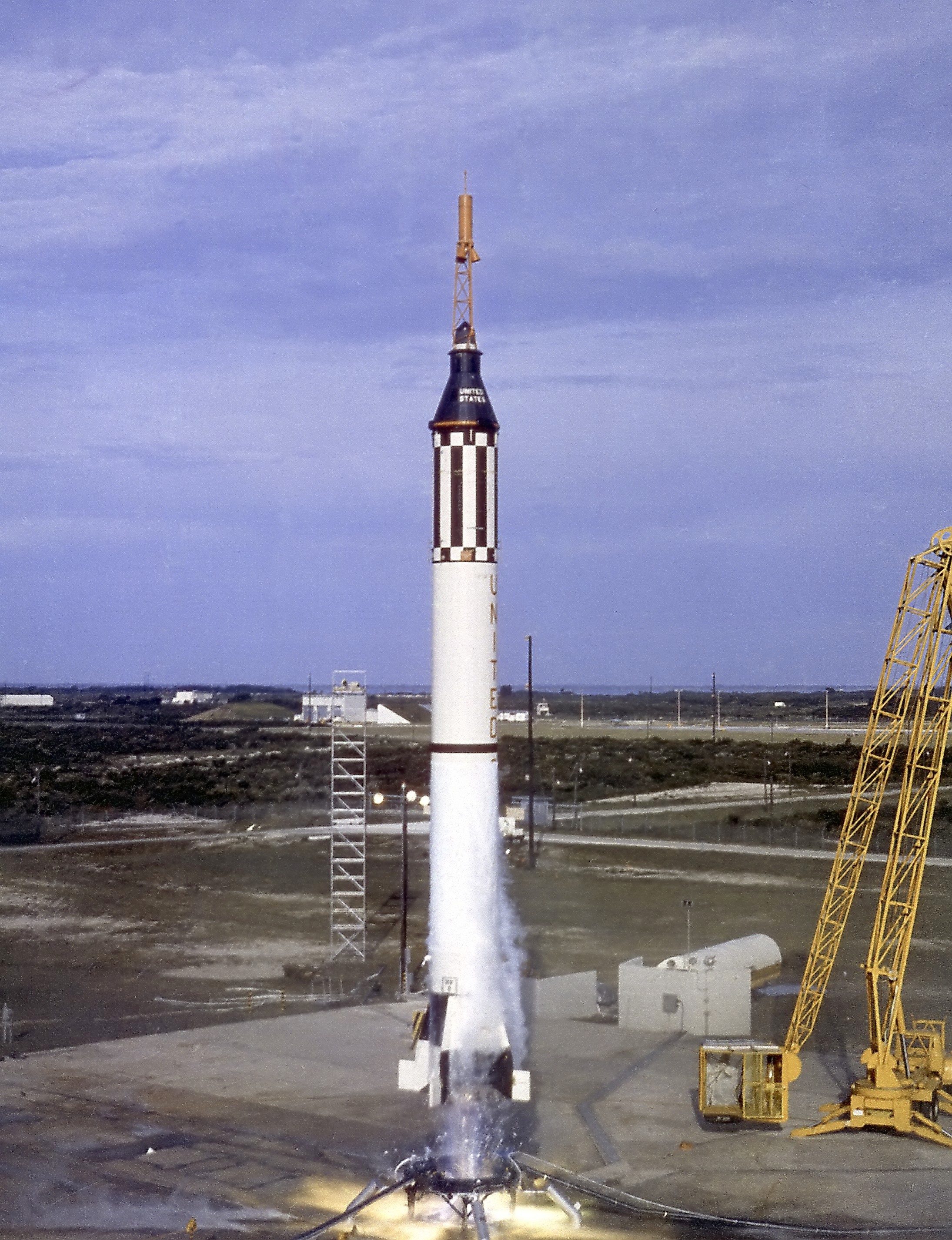|
Splashdown
Splashdown is the method of landing a spacecraft or launch vehicle in a body of water, usually by parachute. This has been the primary recovery method of American capsules including NASA’s Mercury, Gemini, Apollo and Orion along with the private SpaceX Dragon. It is also possible for the Boeing Starliner, Russian Soyuz, and the Chinese Shenzhou crewed capsules to land in water in case of contingency. NASA recovered the Space Shuttle solid rocket boosters (SRBs) via splashdown, as is done for Rocket Lab's Electron first stage. As the name suggests, the vehicle parachutes into an ocean or other large body of water. Due to its low density and viscosity, water cushions the spacecraft enough that there is no need for a braking rocket to slow the final descent as is the case with Russian and Chinese crewed space capsules or airbags as is the case with the Starliner. The American practice came in part because American launch sites are on the coastline and launch primaril ... [...More Info...] [...Related Items...] OR: [Wikipedia] [Google] [Baidu] |
Orion (spacecraft)
Orion (Orion Multi-Purpose Crew Vehicle or Orion MPCV) is a partially reusable crewed spacecraft used in NASA's Artemis program. The spacecraft consists of a Crew Module (CM) space capsule designed by Lockheed Martin that is paired with a European Service Module (ESM) manufactured by Airbus Defence and Space. Capable of supporting a crew of four beyond low Earth orbit, Orion can last up to 21 days undocked and up to six months docked. It is equipped with solar panels, an automated docking system, and glass cockpit interfaces. Orion is launched atop a Space Launch System (SLS) rocket, with a tower launch escape system. Orion was conceived in the early 2000s by Lockheed Martin as a proposal for the Crew Exploration Vehicle (CEV) to be used in NASA's Constellation program and was selected by NASA in 2006. Following the cancellation of the Constellation program in 2010, Orion was extensively redesigned for use in NASA's Journey to Mars initiative; later named Moon to Mars. ... [...More Info...] [...Related Items...] OR: [Wikipedia] [Google] [Baidu] |
Space Shuttle Solid Rocket Booster
The Space Shuttle Solid Rocket Booster (SRB) was the first solid-propellant rocket to be used for primary propulsion on a vehicle used for human spaceflight. A pair of them provided 85% of the Space Shuttle's thrust at liftoff and for the first two minutes of ascent. After burnout, they were jettisoned, and parachuted into the Atlantic Ocean, where they were recoverable booster, recovered, examined, refurbished, and reusable launch system, reused. The Space Shuttle SRBs were the most powerful solid rocket motors to ever launch humans. The Space Launch System (SLS) SRBs, adapted from the shuttle, surpassed it as the most powerful solid rocket motors ever flown, after the launch of the Artemis 1 mission in 2022. Each Space Shuttle SRB provided a maximum thrust, roughly double the most powerful single-combustion chamber liquid-propellant rocket engine ever flown, the Rocketdyne F-1. With a combined mass of about , they comprised over half the mass of the Shuttle stack at liftoff. ... [...More Info...] [...Related Items...] OR: [Wikipedia] [Google] [Baidu] |
Apollo 11
Apollo 11 was a spaceflight conducted from July 16 to 24, 1969, by the United States and launched by NASA. It marked the first time that humans Moon landing, landed on the Moon. Commander Neil Armstrong and Lunar Module pilot Buzz Aldrin landed the Lunar Module Eagle, Lunar Module ''Eagle'' on July 20, 1969, at 20:17 Coordinated Universal Time, UTC, and Armstrong became the first person to step onto the Moon's surface six hours and 39 minutes later, on July 21 at 02:56 UTC. Aldrin joined him 19 minutes later, and they spent about two and a quarter hours together exploring the site they had named Tranquility Base upon landing. Armstrong and Aldrin collected of lunar material to bring back to Earth as pilot Michael Collins (astronaut), Michael Collins flew the Command Module Columbia, Command Module ''Columbia'' in lunar orbit, and were on the Moon's surface for 21 hours, 36 minutes, before lifting off to rejoin ''Columbia''. Apollo 11 was launched by a Saturn V rocket from ... [...More Info...] [...Related Items...] OR: [Wikipedia] [Google] [Baidu] |
Soyuz 23
Soyuz 23 (, ''Union 23'') was an October 1976, Soviet crewed space flight, the second to the Salyut 5 space station. Cosmonauts Vyacheslav Zudov and Valery Rozhdestvensky arrived at the station, but an equipment malfunction did not allow docking and the mission had to be aborted. The crew returned to Earth, but landed on partially frozen Lake Tengiz, the first crewed splashdown in the Soviet space program. While there was no concern about any immediate threat to the crew, the capsule sank under the surface of the frozen lake, and recovery took nine hours owing to fog and other adverse conditions. The landing marked the only example of an unintentional splashdown of a crewed spacecraft as of November 2024. Crew Backup crew Reserve crew Mission highlights Soyuz 23 was launched 14 October 1976 with an estimated 73- to 85-day mission planned aboard the orbiting Salyut 5 space station. Other sources suggest a 17- to 24-day mission was a more likely intention. It ... [...More Info...] [...Related Items...] OR: [Wikipedia] [Google] [Baidu] |
NASA
The National Aeronautics and Space Administration (NASA ) is an independent agencies of the United States government, independent agency of the federal government of the United States, US federal government responsible for the United States's civil list of government space agencies, space program, aeronautics research and outer space, space research. National Aeronautics and Space Act, Established in 1958, it succeeded the National Advisory Committee for Aeronautics (NACA) to give the American space development effort a distinct civilian orientation, emphasizing peaceful applications in space science. It has since led most of America's space exploration programs, including Project Mercury, Project Gemini, the 1968–1972 Apollo program missions, the Skylab space station, and the Space Shuttle. Currently, NASA supports the International Space Station (ISS) along with the Commercial Crew Program and oversees the development of the Orion (spacecraft), Orion spacecraft and the Sp ... [...More Info...] [...Related Items...] OR: [Wikipedia] [Google] [Baidu] |
Apollo Program
The Apollo program, also known as Project Apollo, was the United States human spaceflight program led by NASA, which Moon landing, landed the first humans on the Moon in 1969. Apollo followed Project Mercury that put the first Americans in space. It was conceived in 1960 as a three-person spacecraft during President Presidency of Dwight D. Eisenhower, Dwight D. Eisenhower's administration. Apollo was later dedicated to President John F. Kennedy's national goal for the 1960s of "landing a man on the Moon and returning him safely to the Earth" in an address to United States Congress, Congress on May 25, 1961. It was the third American human spaceflight program to fly, preceded by Project Gemini conceived in 1961 to extend spaceflight capability in support of Apollo. Kennedy's goal was accomplished on the Apollo 11 mission when astronauts Neil Armstrong and Buzz Aldrin landed their Apollo Lunar Module (LM) on July 20, 1969, and walked on the lunar surface, while Michael Collins ( ... [...More Info...] [...Related Items...] OR: [Wikipedia] [Google] [Baidu] |
Electron (rocket)
Electron is a two-stage, partially reusable orbital launch vehicle developed by Rocket Lab, an American aerospace company with a wholly owned New Zealand subsidiary. Servicing the commercial small satellite launch market, it is the third most launched small-lift launch vehicle in history. Its Rutherford engines are the first electric-pump-fed engine to power an orbital-class rocket. Electron is often flown with a kickstage or Rocket Lab's Photon spacecraft. Although the rocket was designed to be expendable, Rocket Lab has recovered the first stage twice and is working towards the capability of reusing the booster. The Flight 26 (F26) booster has featured the first helicopter catch recovery attempt. Rocket Lab has, however, abandoned the idea of catching Electron. In December 2016, Electron completed flight qualification. The first rocket was launched on 25 May 2017, reaching space but not achieving orbit due to a glitch in communication equipment on the ground. During its s ... [...More Info...] [...Related Items...] OR: [Wikipedia] [Google] [Baidu] |
Project Mercury
Project Mercury was the first human spaceflight program of the United States, running from 1958 through 1963. An early highlight of the Space Race, its goal was to put a man into Earth orbit and return him safely, ideally before the Soviet Union. Taken over from the US Air Force by the newly created civilian space agency NASA, it conducted 20 uncrewed developmental flights (some using animals), and six successful flights by astronauts. The program, which took its name from Roman mythology, cost $ (adjusted for inflation). The astronauts were collectively known as the " Mercury Seven", and each spacecraft was given a name ending with a "7" by its pilot. The Space Race began with the 1957 launch of the Soviet satellite Sputnik 1. This came as a shock to the American public, and led to the creation of NASA to expedite existing US space exploration efforts, and place most of them under civilian control. After the successful launch of the Explorer 1 satellite in 1958, crewed spac ... [...More Info...] [...Related Items...] OR: [Wikipedia] [Google] [Baidu] |
Liberty Bell 7
Mercury-Redstone 4 was the second United States human spaceflight, on July 21, 1961. The suborbital Project Mercury flight was launched with a Mercury-Redstone Launch Vehicle, MRLV-8. The spacecraft, Mercury capsule #11, was nicknamed ''Liberty Bell 7''. It was piloted by astronaut Virgil "Gus" Grissom. The spaceflight lasted 15 minutes 30 seconds, reached an altitude of more than , and flew downrange, landing in the Atlantic Ocean. The flight went as expected until just after splashdown, when the hatch cover, designed to release explosively in the event of an emergency, accidentally blew. Grissom was at risk of drowning, but was recovered safely via a U.S. Navy helicopter. The spacecraft sank into the Atlantic and was not recovered until 1999. Mission parameters * Mass: 1 286 kg * Maximum altitude: 190.39 km * Range: 486.15 km * Launch vehicle: Redstone rocket Spacecraft The MR-4 spacecraft, Mercury capsule #11, was designated to fly the second crew ... [...More Info...] [...Related Items...] OR: [Wikipedia] [Google] [Baidu] |
Parachute
A parachute is a device designed to slow an object's descent through an atmosphere by creating Drag (physics), drag or aerodynamic Lift (force), lift. It is primarily used to safely support people exiting aircraft at height, but also serves various purposes like slowing cargo, aiding in space capsule recovery, and stabilizing vehicles or objects. Modern parachutes are typically made from durable fabrics like nylon and come in various shapes, such as dome-shaped, rectangular, and inverted domes, depending on their specific function. The concept of the parachute dates back to ancient attempts at flight. In 852 AD, Armen Firman, in Córdoba, Spain, made the first recorded jump with a large cloak to slow his fall. Renaissance figures like Francesco di Giorgio Martini and Leonardo da Vinci later sketched designs resembling modern parachutes, but it wasn’t until the 18th century that the first successful jumps occurred. French Louis-Sébastien Lenormand made the first public jump i ... [...More Info...] [...Related Items...] OR: [Wikipedia] [Google] [Baidu] |





